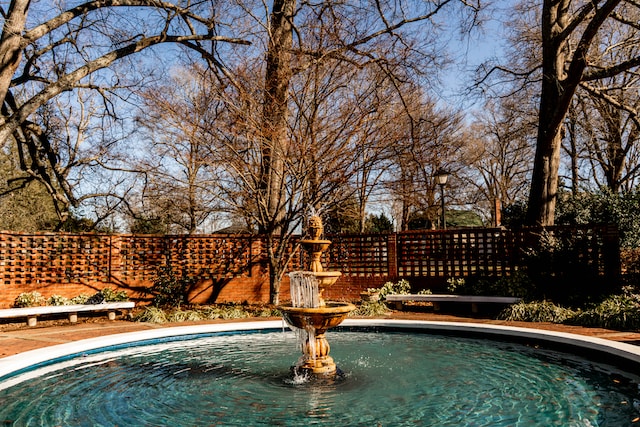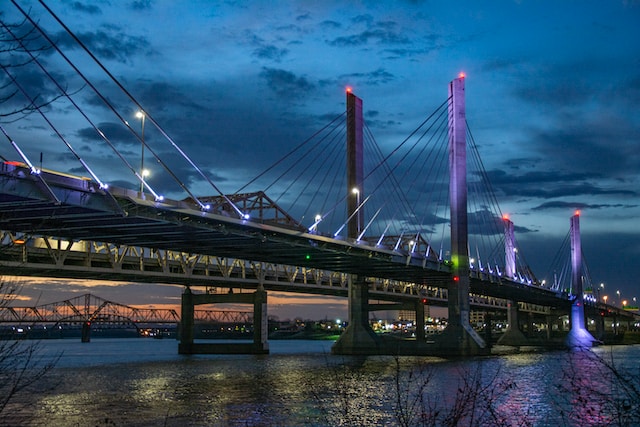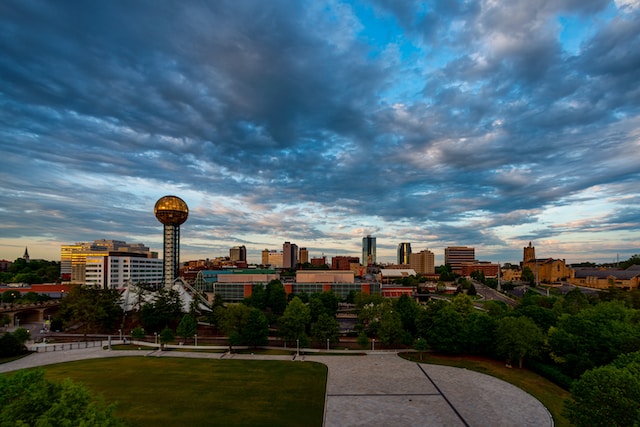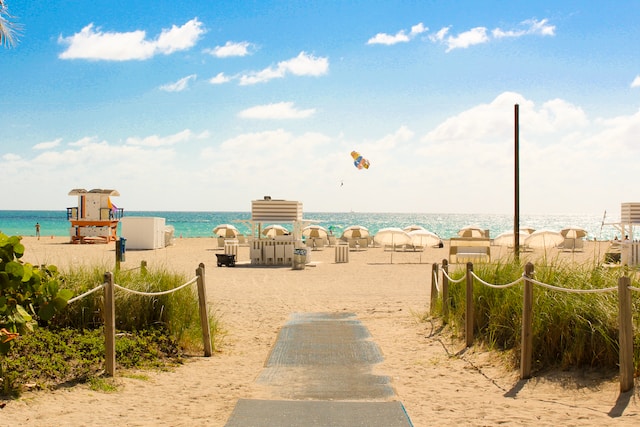The cost of living, particularly housing costs, is a significant factor to consider when choosing where to live in the United States. Fortunately, there are many beautiful and affordable places to call home. U.S. News & World Report’s 2022-2023 rankings provide valuable insights into the cheapest places to live in the U.S., taking into account factors such as median monthly rent, median home price compared to the national median, and overall quality of life.
To help those looking for a budget-friendly place to live, we have compiled a list of some of the cheapest places to live in America. Our list uses data from U.S. News & World Report’s rankings, which assesses the impact of cost of living and quality of life on a city. By assessing these factors, these rankings provide a comprehensive picture of each city, making it easier for potential residents to make an informed decision about where to live.
Factors to consider when looking for the cheapest places to live in the US
When looking for the cheapest places to live in the US, there are several factors that you should consider. Here are five key factors to keep in mind:
- Housing costs: Housing costs are often the largest expense for most people, so it’s important to find a location where the cost of living is affordable. This includes the cost of renting or buying a home, as well as property taxes and insurance.
- Utility costs: Utilities such as electricity, gas, and water can add up quickly, so it’s important to consider the cost of these services when choosing a place to live. Some cities may have higher utility costs than others, so be sure to research this ahead of time.
- Transportation costs: If you own a car, you’ll need to factor in the cost of gas, car insurance, and maintenance. However, some cities have better public transportation systems than others, which can help you save money on transportation costs.
- Food costs: The cost of groceries and eating out can also vary depending on where you live. Some cities have higher food costs than others, so it’s important to research this ahead of time to help you plan your budget.
- Entertainment and leisure costs: Finally, it’s important to consider the cost of entertainment and leisure activities when choosing a place to live. Some cities have more affordable options than others, such as free or low-cost museums, parks, and events.
By considering these factors, you can find a location that is not only affordable but also meets your other needs and preferences.
1. Hickory, North Carolina

Hickory is a charming city located in the foothills of the Blue Ridge Mountains, renowned for its Southern hospitality and extensive hiking trails. As per the recent rankings of the cheapest places to live in the U.S., Hickory has secured the top spot, with a median home price of $161,000. Its affordability, combined with its proximity to Asheville and Charlotte, has made Hickory an attractive option for retirees and young families alike. Furthermore, the city’s reputation as a burgeoning technological hub for tech giants such as Google and Apple has also drawn in a steady stream of new residents.
Cost of living in Hickory
Hickory, North Carolina is known for its low cost of living compared to many other cities in the United States. Here are some approximate costs of living in Hickory:
- Housing: The median home value in Hickory is around $159,000, which is lower than the national median home value of $295,000. The average monthly rent for a one-bedroom apartment in Hickory is around $750, which is also lower than the national average of $1,100.
- Utilities: The average monthly cost for utilities in Hickory, including electricity, gas, and water, is around $130 for a 915 square foot apartment. This is slightly lower than the national average of $147.
- Transportation: The average cost of gasoline in Hickory is around $2.50 per gallon, which is slightly lower than the national average. Additionally, Hickory has a local bus service called the Hickory Hop, which offers low-cost transportation throughout the city.
- Food: The cost of groceries in Hickory is generally lower than the national average. For example, a gallon of milk costs around $2.40, and a loaf of bread costs around $2.50.
- Entertainment and leisure: Hickory offers many affordable entertainment options, including free or low-cost museums, parks, and events. For example, the Hickory Museum of Art is free to visit, and the Hickory Crawdads minor league baseball team offers affordable tickets.
Overall, Hickory is a great option for those looking for an affordable place to live. While the cost of living can vary depending on factors such as location within the city and individual lifestyle choices, Hickory generally offers lower costs of living compared to many other cities in the US.
Amenities in Hickory
Hickory, North Carolina offers a variety of attractions and amenities that make it a popular destination for both residents and visitors. Here are some notable attractions and amenities in Hickory:
- Hickory Furniture Mart: The Hickory Furniture Mart is a popular shopping destination that features over 100 furniture stores and galleries, making it one of the largest furniture showrooms in the world.
- Hickory Crawdads: The Hickory Crawdads are a minor league baseball team that plays at the L.P. Frans Stadium in Hickory. The team is a popular source of entertainment for sports fans and families.
- Lake Hickory: Lake Hickory is a large man-made lake that offers opportunities for boating, fishing, and other water sports. The lake is a popular destination for outdoor enthusiasts and nature lovers.
- Hickory Aviation Museum: The Hickory Aviation Museum features a collection of vintage aircraft and other aviation-related exhibits. The museum is a popular destination for aviation enthusiasts and history buffs.
- Hickory Community Theatre: The Hickory Community Theatre is a local theater that offers a variety of performances throughout the year, including plays, musicals, and other cultural events.
- Greenway: The Hickory Greenway is a network of paved trails that wind through the city and offer opportunities for walking, jogging, and biking. The greenway is a popular destination for fitness enthusiasts and families.
Overall, Hickory offers a variety of attractions and amenities that make it a desirable place to live or visit.
2. Grand Rapids, Michigan

For those looking for a low-cost place to live, Grand Rapids is an excellent option. With a median home cost of approximately $367,000, this city is located just an hour away from the coast of Lake Michigan. It is an ideal location for families who are searching for an affordable, family-oriented environment, with its growing arts and culture scene and scenic parks along the Grand River. Despite being an underrated city, Grand Rapids has a lot to offer, particularly during the fall when its trees are adorned with bright foliage, making it one of the cheapest places to live in the US.
Cost of living in Grand Rapids
Grand Rapids, Michigan has a relatively low cost of living compared to other cities in the United States. Here are some approximate costs of living in Grand Rapids:
- Housing: The median home value in Grand Rapids is around $173,000, which is lower than the national median home value of $295,000. The average monthly rent for a one-bedroom apartment in Grand Rapids is around $850, which is slightly lower than the national average of $1,100.
- Utilities: The average monthly cost for utilities in Grand Rapids, including electricity, gas, and water, is around $140 for a 915 square foot apartment. This is slightly higher than the national average of $147.
- Transportation: The average cost of gasoline in Grand Rapids is around $2.60 per gallon, which is slightly higher than the national average. However, Grand Rapids has a public transportation system called The Rapid, which offers low-cost transportation throughout the city.
- Food: The cost of groceries in Grand Rapids is generally lower than the national average. For example, a gallon of milk costs around $2.70, and a loaf of bread costs around $2.50.
- Entertainment and leisure: Grand Rapids offers many affordable entertainment options, including free or low-cost museums, parks, and events. For example, the Frederik Meijer Gardens & Sculpture Park offers free admission for children under the age of 2 and a discounted admission for students.
Overall, Grand Rapids is a great option for those looking for an affordable place to live. While the cost of living can vary depending on factors such as location within the city and individual lifestyle choices, Grand Rapids generally offers lower costs of living compared to many other cities in the US.
Amenities in Grand Rapids
Grand Rapids, Michigan is a mid-sized city that offers a variety of amenities for residents and visitors. Here are some notable amenities in Grand Rapids:
- Grand Rapids Art Museum: The Grand Rapids Art Museum is a popular destination for art lovers and features a collection of over 6,000 works of art, including contemporary art, American and European art, and more.
- Frederik Meijer Gardens and Sculpture Park: The Frederik Meijer Gardens and Sculpture Park is a 158-acre park that features a variety of outdoor sculptures, gardens, and other attractions. The park is a popular destination for nature lovers and families.
- Gerald R. Ford Presidential Museum: The Gerald R. Ford Presidential Museum is a museum dedicated to the life and legacy of former US President Gerald Ford. The museum features exhibits on his life and presidency, as well as artifacts and memorabilia.
- John Ball Zoo: The John Ball Zoo is a popular destination for families and features a variety of animals from around the world, including lions, tigers, and bears.
- Van Andel Arena: The Van Andel Arena is a multi-purpose arena that hosts a variety of events, including concerts, sporting events, and more.
- Grand River: The Grand River is a large river that runs through Grand Rapids and offers opportunities for boating, fishing, and other water sports. The river is a popular destination for outdoor enthusiasts.
Overall, Grand Rapids offers a variety of amenities that make it a desirable place to live or visit, including cultural attractions, outdoor activities, and entertainment venues.
3. Greenville, South Carolina

For those looking for an affordable place to live, Greenville is an excellent choice. Nestled at the base of the Blue Ridge Mountains in South Carolina, Greenville is well-known for its lively downtown, which features a range of exciting restaurants, unique boutiques, and picturesque views of Falls Park on the Reedy. The city’s downtown area has recently undergone a revival, making it an increasingly attractive destination for prospective residents. Additionally, Greenville is one of the cheapest places to live in the US, with a median home price of around $320,000 that falls below the national median.
Cost of living in Greenville
Greenville, South Carolina is known for having a relatively low cost of living compared to many other cities in the United States. Here are some approximate costs of living in Greenville:
- Housing: The median home value in Greenville is around $225,000, which is slightly lower than the national median home value of $295,000. The average monthly rent for a one-bedroom apartment in Greenville is around $900, which is lower than the national average of $1,100.
- Utilities: The average monthly cost for utilities in Greenville, including electricity, gas, and water, is around $140 for a 915 square foot apartment. This is slightly higher than the national average of $147.
- Transportation: The average cost of gasoline in Greenville is around $2.50 per gallon, which is slightly lower than the national average. Additionally, Greenville has a public transportation system called Greenlink, which offers low-cost transportation throughout the city.
- Food: The cost of groceries in Greenville is generally lower than the national average. For example, a gallon of milk costs around $2.50, and a loaf of bread costs around $2.50.
- Entertainment and leisure: Greenville offers many affordable entertainment options, including free or low-cost museums, parks, and events. For example, the Greenville County Museum of Art is free to visit, and the city offers a variety of free outdoor concerts and festivals throughout the year.
Overall, Greenville is a great option for those looking for an affordable place to live. While the cost of living can vary depending on factors such as location within the city and individual lifestyle choices, Greenville generally offers lower costs of living compared to many other cities in the US.
4. Louisville, Kentucky

Louisville, Kentucky is a city known for its rich history and culture, with a global reputation for hosting the famous Kentucky Derby. The city is surrounded by an expansive and lush park system, complete with walking trails, and boasts stunning views of the Ohio River from its Waterfront Park and Big Four Pedestrian Bridge. With a low median housing cost of around $163,000, Louisville is one of the cheapest places to live in the US, making it an attractive option for those seeking an affordable new home. Additionally, Louisville has a thriving culinary scene and is renowned for its exclusive bourbon distillery experiences.
Cost of living in Louisville
Louisville, Kentucky has a relatively low cost of living compared to many other cities in the United States. Here are some approximate costs of living in Louisville:
- Housing: The median home value in Louisville is around $165,000, which is lower than the national median home value of $295,000. The average monthly rent for a one-bedroom apartment in Louisville is around $950, which is slightly lower than the national average of $1,100.
- Utilities: The average monthly cost for utilities in Louisville, including electricity, gas, and water, is around $140 for a 915 square foot apartment. This is slightly higher than the national average of $147.
- Transportation: The average cost of gasoline in Louisville is around $2.60 per gallon, which is slightly higher than the national average. However, Louisville has a public transportation system called TARC, which offers low-cost transportation throughout the city.
- Food: The cost of groceries in Louisville is generally lower than the national average. For example, a gallon of milk costs around $2.70, and a loaf of bread costs around $2.50.
- Entertainment and leisure: Louisville offers many affordable entertainment options, including free or low-cost museums, parks, and events. For example, the Louisville Slugger Museum & Factory offers discounted admission for children and seniors, and the city offers a variety of free outdoor concerts and festivals throughout the year.
Overall, Louisville is a great option for those looking for an affordable place to live. While the cost of living can vary depending on factors such as location within the city and individual lifestyle choices, Louisville generally offers lower costs of living compared to many other cities in the US.
5. Knoxville, Tennessee

Knoxville, Tennessee, is an excellent option for those looking for an affordable place to live, with a median home price of approximately $335,000. The city is located in close proximity to the Great Smoky Mountains National Park, offering residents easy access to nature and outdoor recreation. Knoxville is also known for its lively downtown area and is considered a college sports town, with the University of Tennessee located in the city. Young families are drawn to Knoxville for its affordable cost of living and family-friendly atmosphere, making it an ideal place to call home.
Cost of living in Knoxville
Knoxville, Tennessee is known for having a relatively low cost of living compared to many other cities in the United States. Here are some approximate costs of living in Knoxville:
- Housing: The median home value in Knoxville is around $170,000, which is lower than the national median home value of $295,000. The average monthly rent for a one-bedroom apartment in Knoxville is around $900, which is lower than the national average of $1,100.
- Utilities: The average monthly cost for utilities in Knoxville, including electricity, gas, and water, is around $140 for a 915 square foot apartment. This is slightly higher than the national average of $147.
- Transportation: The average cost of gasoline in Knoxville is around $2.60 per gallon, which is slightly higher than the national average. However, Knoxville has a public transportation system called KAT, which offers low-cost transportation throughout the city.
- Food: The cost of groceries in Knoxville is generally lower than the national average. For example, a gallon of milk costs around $2.50, and a loaf of bread costs around $2.50.
- Entertainment and leisure: Knoxville offers many affordable entertainment options, including free or low-cost museums, parks, and events. For example, the Knoxville Museum of Art is free to visit, and the city offers a variety of free outdoor concerts and festivals throughout the year.
Overall, Knoxville is a great option for those looking for an affordable place to live. While the cost of living can vary depending on factors such as location within the city and individual lifestyle choices, Knoxville generally offers lower costs of living compared to many other cities in the US.
6. St. Louis, Missouri

St. Louis is often considered one of the cheapest places to live in the US. This mid-sized city is located along the Mississippi River in the Midwest and is renowned for its iconic Gateway Arch National Park. St. Louis is also home to the sprawling 1,300-acre Forest Park, one of the largest urban parks in the country, which adds to its already picturesque setting.
With a median home price of around $260,000, St. Louis is an affordable option for those considering a move. Its lower housing costs compared to the national median make it an attractive destination for those seeking a more budget-friendly place to live. Overall, St. Louis offers a high quality of life and a lower cost of living, making it a great option for those looking for a more affordable place to call home.
Cost of living in St. Louis
St. Louis, Missouri is known for having a relatively low cost of living compared to many other cities in the United States. Here are some approximate costs of living in St. Louis:
- Housing: The median home value in St. Louis is around $135,000, which is lower than the national median home value of $295,000. The average monthly rent for a one-bedroom apartment in St. Louis is around $900, which is lower than the national average of $1,100.
- Utilities: The average monthly cost for utilities in St. Louis, including electricity, gas, and water, is around $150 for a 915 square foot apartment. This is slightly higher than the national average of $147.
- Transportation: The average cost of gasoline in St. Louis is around $2.60 per gallon, which is slightly higher than the national average. However, St. Louis has a public transportation system called Metro, which offers low-cost transportation throughout the city.
- Food: The cost of groceries in St. Louis is generally lower than the national average. For example, a gallon of milk costs around $2.80, and a loaf of bread costs around $2.50.
- Entertainment and leisure: St. Louis offers many affordable entertainment options, including free or low-cost museums, parks, and events. For example, the St. Louis Art Museum is free to visit, and the city offers a variety of free outdoor concerts and festivals throughout the year.
Overall, St. Louis is a great option for those looking for an affordable place to live. While the cost of living can vary depending on factors such as location within the city and individual lifestyle choices, St. Louis generally offers lower costs of living compared to many other cities in the US.
7. Dallas-Fort Worth, Texas
The DFW metroplex, located in North Texas, is a combination of Dallas and Fort Worth. These two cities are renowned for their unique characteristics that draw singles and young professionals to their growing job markets and impressive skylines. Dallas has a lively downtown and a thriving arts district, while Fort Worth boasts an iconic cattle drive in the Stockyards and an exceptional cultural district. DFW has a lot to offer, from tranquil walking trails to vibrant nightlife and innovative restaurants. Additionally, the median housing cost in DFW is around $394,400, which is relatively affordable compared to its median household income.
Cost of living in Dallas-Fort Worth
The Dallas-Fort Worth metropolitan area in Texas is known for having a relatively affordable cost of living compared to other major US cities. Here are some approximate costs of living in the Dallas-Fort Worth area:
- Housing: The median home value in the Dallas-Fort Worth area is around $290,000, which is higher than the national median home value of $295,000. The average monthly rent for a one-bedroom apartment in Dallas-Fort Worth is around $1,100, which is close to the national average.
- Utilities: The average monthly cost for utilities in Dallas-Fort Worth, including electricity, gas, and water, is around $155 for a 915 square foot apartment, which is close to the national average.
- Transportation: The average cost of gasoline in Dallas-Fort Worth is around $2.50 per gallon, which is lower than the national average. The area has a well-developed public transportation system called Dallas Area Rapid Transit (DART), which offers affordable transportation throughout the metro area.
- Food: The cost of groceries in Dallas-Fort Worth is generally lower than the national average. For example, a gallon of milk costs around $2.50, and a loaf of bread costs around $2.50.
- Entertainment and leisure: Dallas-Fort Worth offers a wide range of affordable entertainment options, including free or low-cost museums, parks, and events. For example, the Dallas Museum of Art is free to visit, and the area has many free outdoor concerts and festivals throughout the year.
Overall, the cost of living in the Dallas-Fort Worth area can vary depending on the specific location within the metro area and individual lifestyle choices. However, in general, the area is known for offering a relatively affordable cost of living compared to other major US cities.
8. Raleigh-Durham, North Carolina
Raleigh, the capital city of North Carolina, and its neighboring city, Durham, form the largest part of the Research Triangle, or “The Triangle,” known for its top-tier universities. The area has a growing job market, with high-paying jobs in medicine, research, and technology, making it an attractive option for young professionals who want to raise a family in an affordable location. The Triangle offers beautiful green landscapes, creative local cuisine, and an exciting college sports rivalry. While the median housing price in the area is around $436,700, which is in line with the national median, homeowners can take advantage of lower property taxes.
Cost of living in Raleigh-Durham
The Raleigh-Durham metropolitan area in North Carolina is known for having a relatively affordable cost of living compared to other major US cities. Here are some approximate costs of living in the Raleigh-Durham area:
- Housing: The median home value in the Raleigh-Durham area is around $320,000, which is higher than the national median home value of $295,000. The average monthly rent for a one-bedroom apartment in Raleigh-Durham is around $1,100, which is close to the national average.
- Utilities: The average monthly cost for utilities in Raleigh-Durham, including electricity, gas, and water, is around $160 for a 915 square foot apartment, which is close to the national average.
- Transportation: The average cost of gasoline in Raleigh-Durham is around $2.50 per gallon, which is lower than the national average. The area has a public transportation system called GoTriangle, which offers affordable transportation throughout the region.
- Food: The cost of groceries in Raleigh-Durham is generally lower than the national average. For example, a gallon of milk costs around $2.70, and a loaf of bread costs around $2.50.
- Entertainment and leisure: Raleigh-Durham offers a variety of affordable entertainment options, including free or low-cost museums, parks, and events. For example, the North Carolina Museum of Art is free to visit, and the area has many free outdoor concerts and festivals throughout the year.
Overall, the cost of living in the Raleigh-Durham area can vary depending on the specific location within the metro area and individual lifestyle choices. However, in general, the area is known for offering a relatively affordable cost of living compared to other major US cities.
9. South Bend, Indiana
South Bend is a popular college town with several universities nearby, making it an attractive location for individuals seeking jobs in higher education. This creates a diverse population of singles, young families, and empty nesters who appreciate the city’s low cost of living and affordable median housing cost, which is around $142,000. For those who love nature, South Bend has many hiking trails and offers various outdoor recreational opportunities. Its convenient location near Lake Michigan also provides a picturesque backdrop and a great place to live.
Cost of living in South Bend
South Bend, Indiana is a relatively small city with a lower cost of living compared to many larger US cities. Here are some approximate costs of living in South Bend:
- Housing: The median home value in South Bend is around $96,000, which is much lower than the national median home value of $295,000. The average monthly rent for a one-bedroom apartment in South Bend is around $800, which is lower than the national average.
- Utilities: The average monthly cost for utilities in South Bend, including electricity, gas, and water, is around $135 for a 915 square foot apartment, which is lower than the national average.
- Transportation: The cost of gasoline in South Bend is around $2.70 per gallon, which is close to the national average. The city has a public transportation system called Transpo, which offers affordable transportation throughout the area.
- Food: The cost of groceries in South Bend is generally lower than the national average. For example, a gallon of milk costs around $2.30, and a loaf of bread costs around $2.50.
- Entertainment and leisure: South Bend offers a variety of affordable entertainment options, including museums, parks, and events. For example, the Studebaker National Museum offers affordable admission prices, and the city has many free outdoor concerts and festivals throughout the year.
Overall, the cost of living in South Bend is relatively low compared to many other US cities, making it an attractive option for those looking to live in an affordable area. However, as with any city, the cost of living can vary depending on individual lifestyle choices and the specific location within the city.
10. Pittsburgh, Pennsylvania
Pittsburgh has a rich history rooted in the steel industry, but the city has continued to evolve and diversify its job market, as reflected in its growing skyline. With a vibrant culinary scene and a substantial cultural district, Pittsburgh is an attractive location for young families. Although housing prices in the city have been increasing due to job growth, the median housing cost is still relatively affordable at around $222,000, especially when compared to other major cities in the U.S.
Cost of living in Pittsburgh
Pittsburgh, Pennsylvania is a mid-sized city with a cost of living that is generally lower than many other larger US cities. Here are some approximate costs of living in Pittsburgh:
- Housing: The median home value in Pittsburgh is around $165,000, which is lower than the national median home value of $295,000. The average monthly rent for a one-bedroom apartment in Pittsburgh is around $1,100, which is close to the national average.
- Utilities: The average monthly cost for utilities in Pittsburgh, including electricity, gas, and water, is around $170 for a 915 square foot apartment, which is close to the national average.
- Transportation: The cost of gasoline in Pittsburgh is around $2.90 per gallon, which is close to the national average. The city has a public transportation system called Port Authority, which offers affordable transportation throughout the area.
- Food: The cost of groceries in Pittsburgh is generally lower than the national average. For example, a gallon of milk costs around $2.70, and a loaf of bread costs around $2.50.
- Entertainment and leisure: Pittsburgh offers a variety of affordable entertainment options, including museums, parks, and events. For example, the Carnegie Museum of Art and Natural History offers affordable admission prices, and the city has many free outdoor concerts and festivals throughout the year.
Overall, the cost of living in Pittsburgh can vary depending on individual lifestyle choices and the specific location within the city. However, in general, the city is known for offering a relatively affordable cost of living compared to other major US cities.







